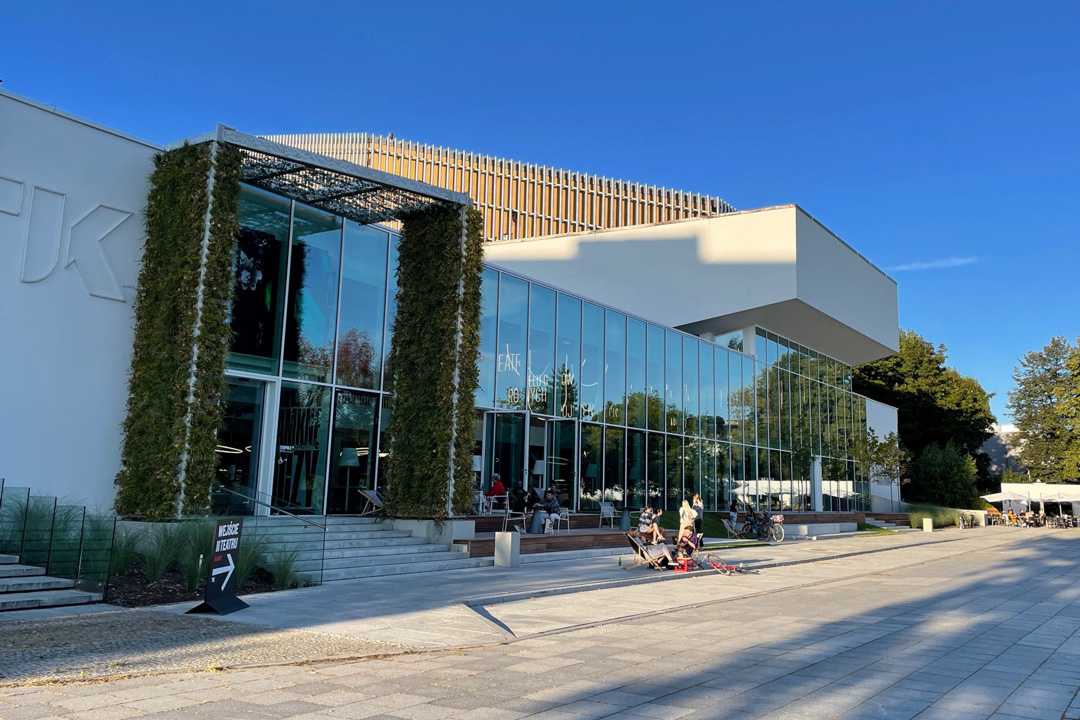Poland’s largest theatre upgrades with Optocore
- Details

In order to preserve its impressive heritage, it was recognised that Jan Kochanowski Theatre in Opole (JK Opole Theatre) would need to undergo full modernisation, and a thorough overhaul of its technical infrastructure, fulfilling a dream it had nurtured for several years.
The cost of reconstruction was budgeted at PLN 25m ($6m US), with over half coming from EU funds.
The project, which took eight months to fulfil, included the renewal of the main building façade, the entrance and surroundings, the modernisation of stages and auditorium (including ventilation), as well as sound and lighting systems. This included a complete Optocore fibre network, based around the deployment of five AutoRouters.
The theatre layout itself includes the 575-seat Big Stage, with an impressive revolving stage; Small Stage (with 193 seats, in amphitheatre auditorium style); a Ground Floor stage known as the Bunker - and a Model Workshop (Modelatornia), with 140 seats in customisable configuration. This is where the idea of modernising the theatre's electroacoustic system first began in 2017 with the possibility of producing sound from each side, in any configuration.
As part of this project, a new theatre façade was made, and the ventilation and air conditioning system and part of the electrical installation of the building were modernised. At the same time, the Centre for Theatre Education was also established. A new stage lighting for the Small Stage was delivered, its acoustics were improved and the electroacoustic system of all stages was modernised at the hands of well-known technical integrators, M.Ostrowski Sp. J.
Their audio design engineer (and project manager), Paweł Francuz, states: "The modernisation of the TJK technical facility was no easy task. The theatre building is a huge facility, with several rooms, requiring a complicated layout of the cable routes from the central control room on level -2 (the hub of the entire signal distribution system to the electroacoustic system). The task was not facilitated by the Covid-19 pandemic, as a result of which we had to stop work, and the delivery of some of the devices manufactured overseas was delayed.”
In designing the new infrastructure M. Ostrowski specified a DiGiCo / Optocore combination, as the quality and functionality of the mixing and network distribution system became their top priority.
The digital transmission of audio signals, broadcast through Meyer PA systems, is based on creating an autonomous Optocore fibre optic network for each stage of the theatre. It operates in a redundant five-point star topology - independently for each scene - to create full communication between each location (amounting to 30 locations in total). This has been made possible by the deployment of five Optocore AutoRouters, further facilitated by an additional redundant Dante network.
These are equipped with a total of 86 Neutrik OpticalCON DUO sockets to carry out the function of combining individual scenes with each other in any configuration, remotely, without interfering with the structure of fiber optic network connections.
The DiGiCo SD series consoles and SD stageracks are equipped with Optocore DD32R and X6R-TP fibre interfaces, which route the main PA feed to the Galileo processor. This enables bi-directional, low-latency transmission of up to 1024 audio channels is possible. This applies to both the console-to-stagerack and console-to-console transmission.
An additional solution used in connection with the transmission of digital audio signals, is a set of Optocore > Dante converters allowing for the transmission of a total of 256 input channels and 256 output channels between networks. This concept assumed the possibility of redundant transmission of ‘everything, everywhere’.
















